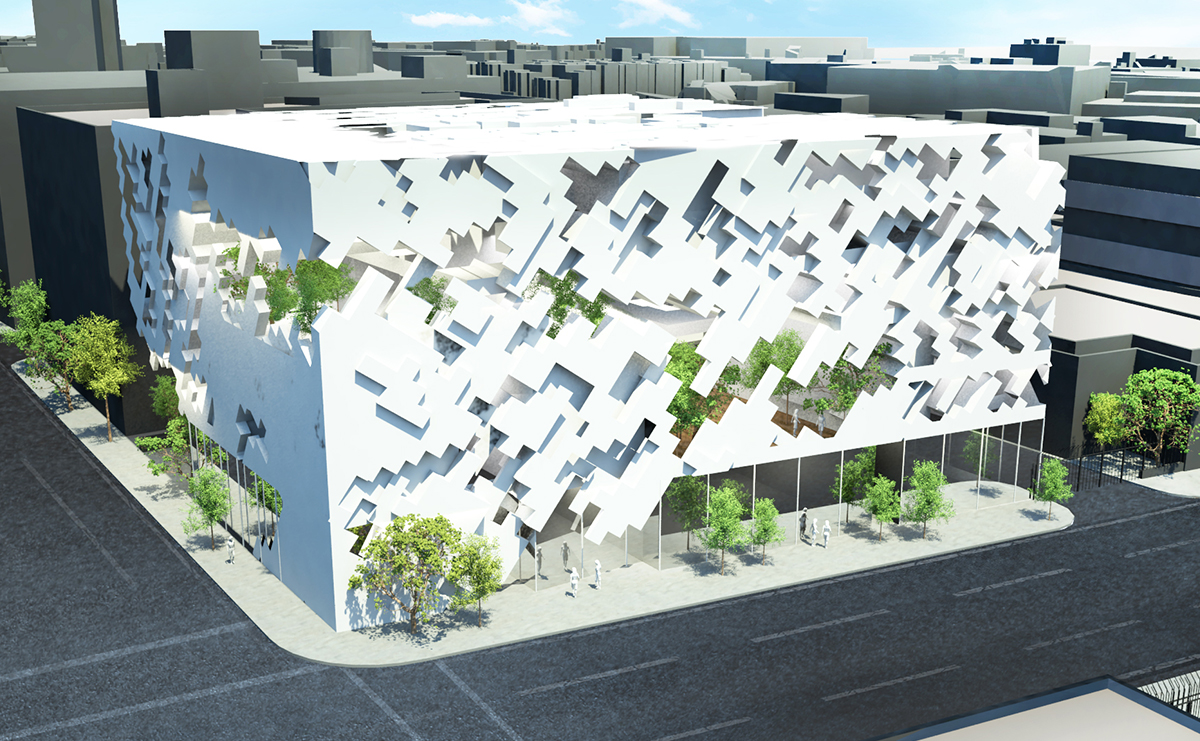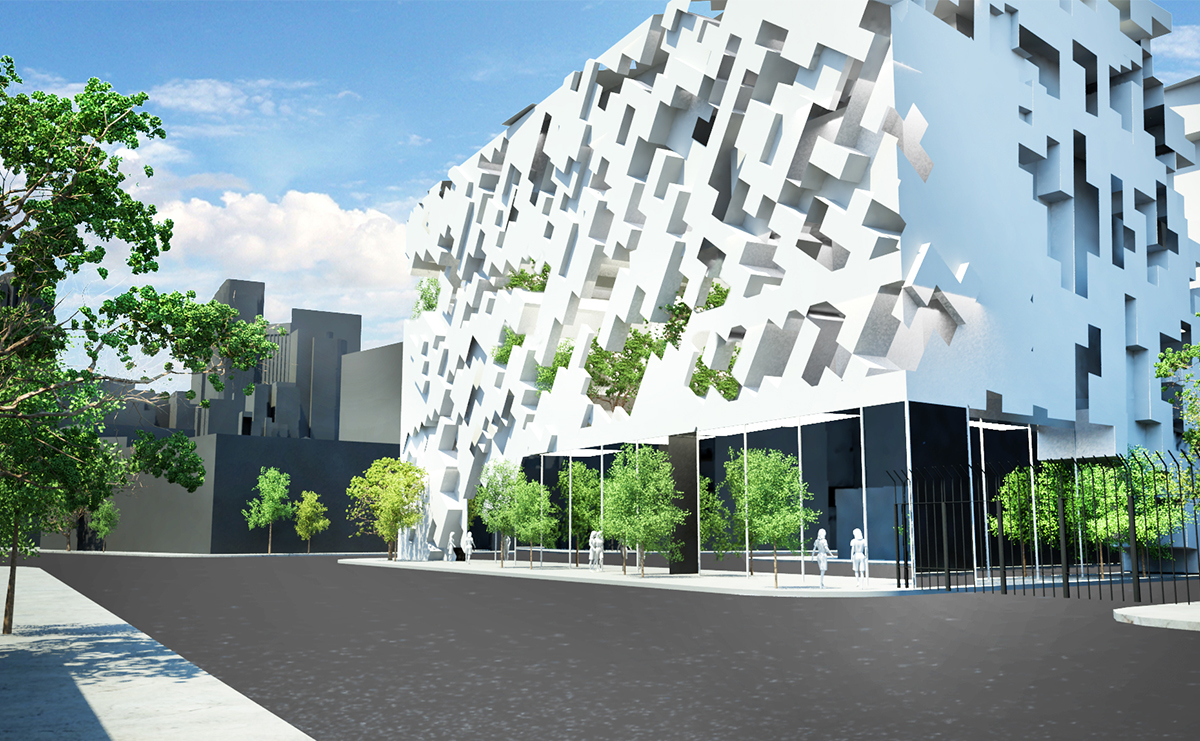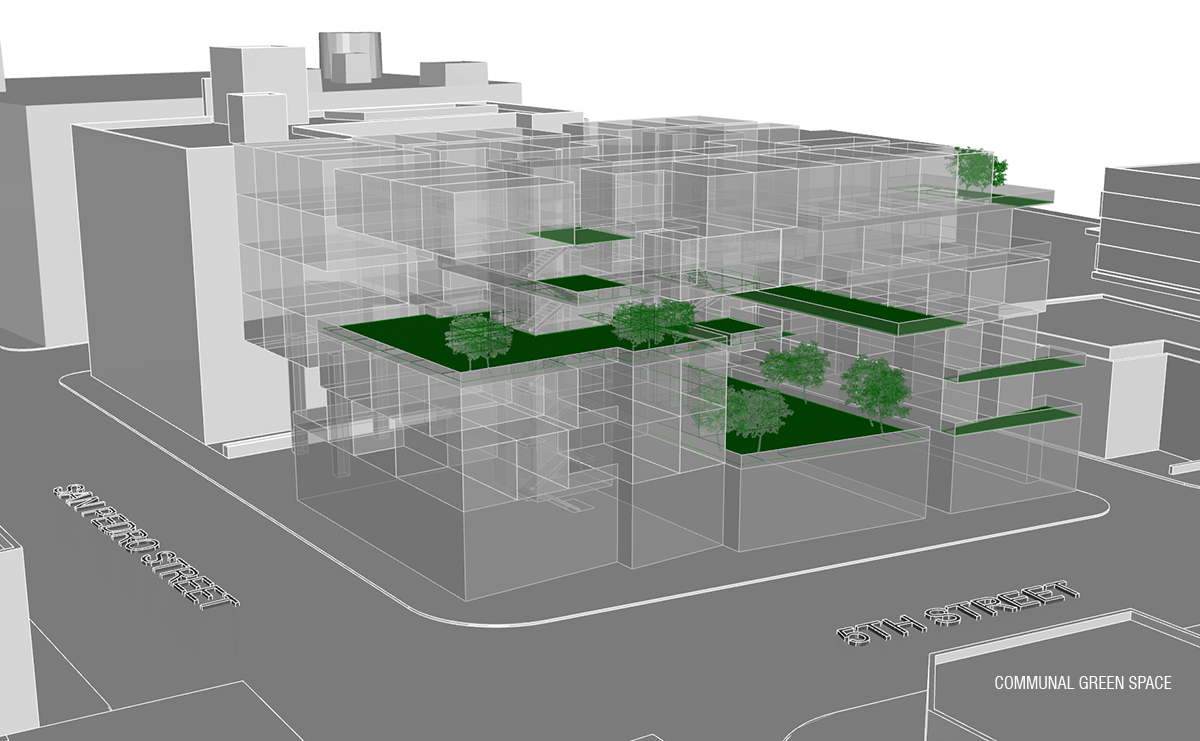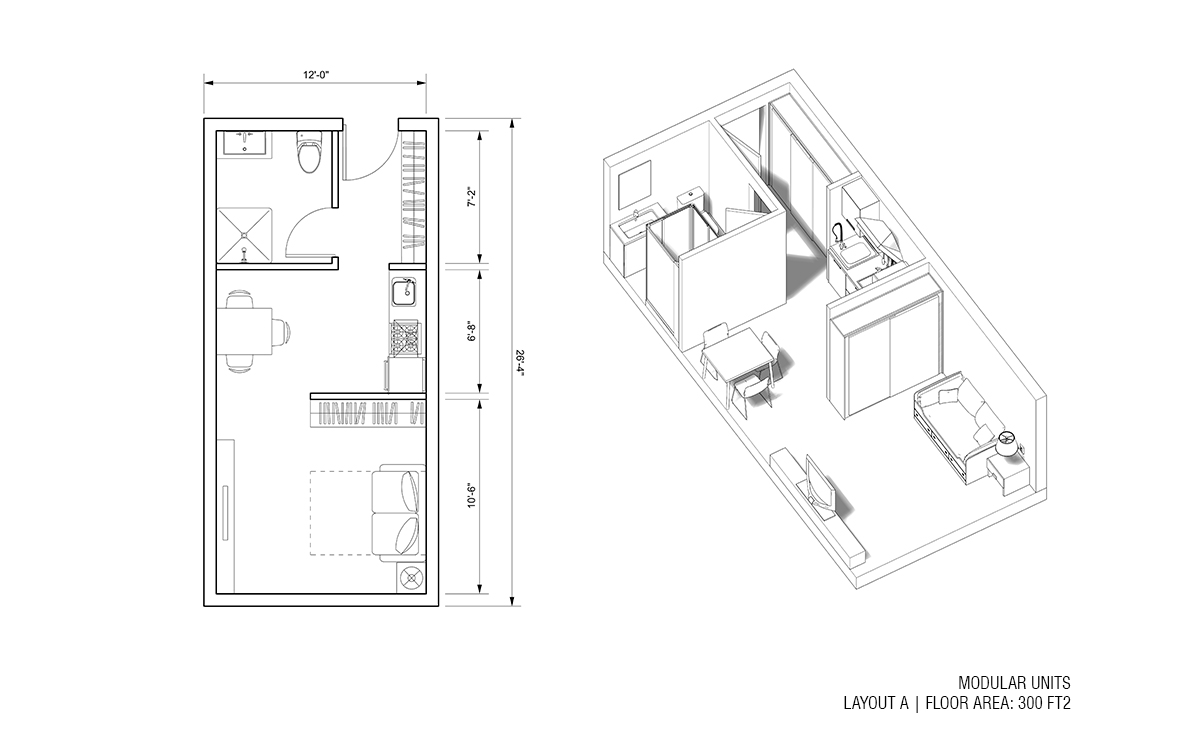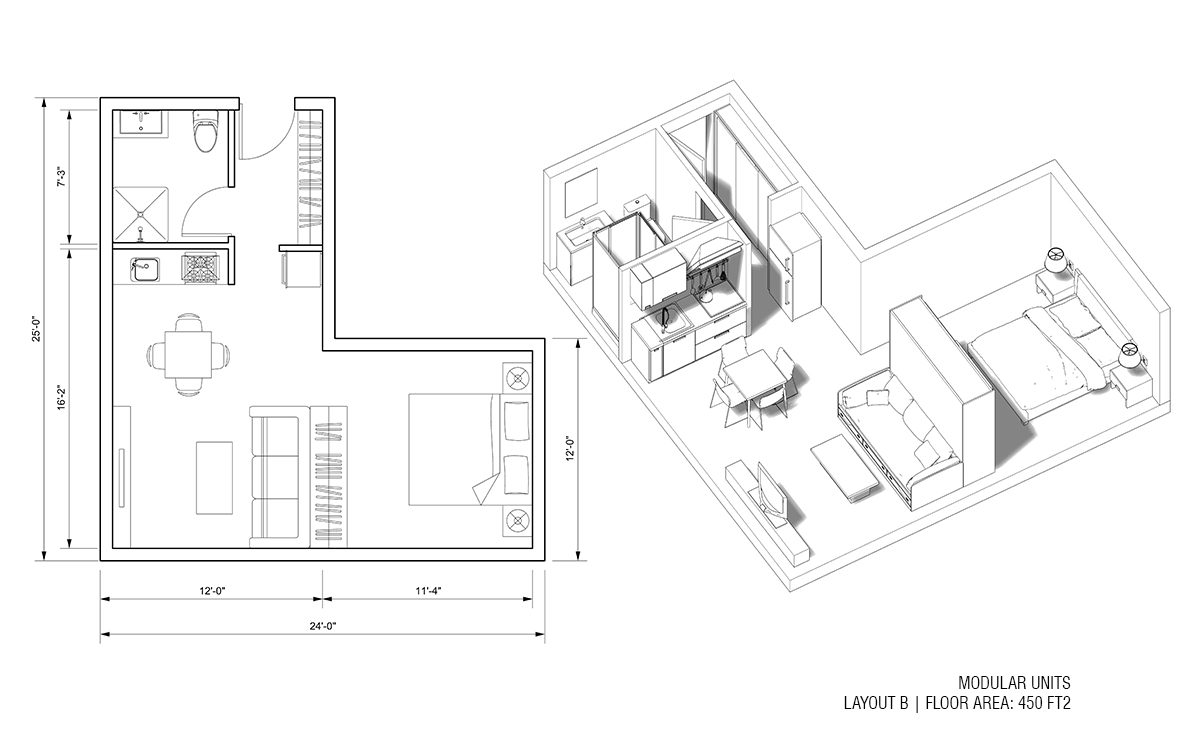Skid Row Housing
Client: Skid Row Housing Trust
Program: Multi-Unit Housing (112 Units)
Size: 88,800 SQ FT
Budget: Withheld by Client
Completion Date: Design Completed 2018
Material: Aluminum, Steel
Architect: Baumgartner + Uriu, llp
Team: Garrett Sutherlin Santo, Ke Li
Consultant: Facade: Ignition Arts , Modular Units: Silver Creek
Skid Row Housing
As of 2019, Los Angeles is in the midst of a housing crisis with a homeless population estimated over 50,000 people. In 2016, LA voters overwhelmingly approved measure HHH (permanent supportive housing loan program) committing 1.2 billion dollars to build housing for the homeless. Yet, 3 years later not much has happened and the homeless population continues to rise. While there are many approaches being taken to tackle the problem, their implementation has been slow and full of administrative hurdles. Most agree that the immediate problem is best solved by creating housing, but attempts to propose new units are often met with the response “not in my neighborhoodâ€. As politicians work through political obstacles, we as architects have a social responsibility to contribute some of our time and expertise to the effort by developing innovative housing proposals that are affordable, quickly built, and architecturally well designed.
With this backdrop, we have been working with Mike Alvarez and the “Skid Row Housing Trust†on a few housing prototypes. These design proposals utilize stack-able pre-fabricated housing units enclosed with an exterior metal cladding. This system allows for great flexibility and can be built within a minimal budget. The units are stacked in a variety of ways, intentionally leaving open spaces between units. These ‘gaps’ serve as social and shared green spaces; designed to foster social interaction and a higher quality of living within the project. The units vary in size from a 300sqft studio to a 500sqft single bedroom unit and are simple steel framed boxes that are pre-finished and trucked and lifted on the site with a crane. The metal facade with its punched openings provides both a shading screen for the social and green spaces as well as a unifying envelope that ties the units together into a single mass.
With this backdrop, we have been working with Mike Alvarez and the “Skid Row Housing Trust†on a few housing prototypes. These design proposals utilize stack-able pre-fabricated housing units enclosed with an exterior metal cladding. This system allows for great flexibility and can be built within a minimal budget. The units are stacked in a variety of ways, intentionally leaving open spaces between units. These ‘gaps’ serve as social and shared green spaces; designed to foster social interaction and a higher quality of living within the project. The units vary in size from a 300sqft studio to a 500sqft single bedroom unit and are simple steel framed boxes that are pre-finished and trucked and lifted on the site with a crane. The metal facade with its punched openings provides both a shading screen for the social and green spaces as well as a unifying envelope that ties the units together into a single mass.

